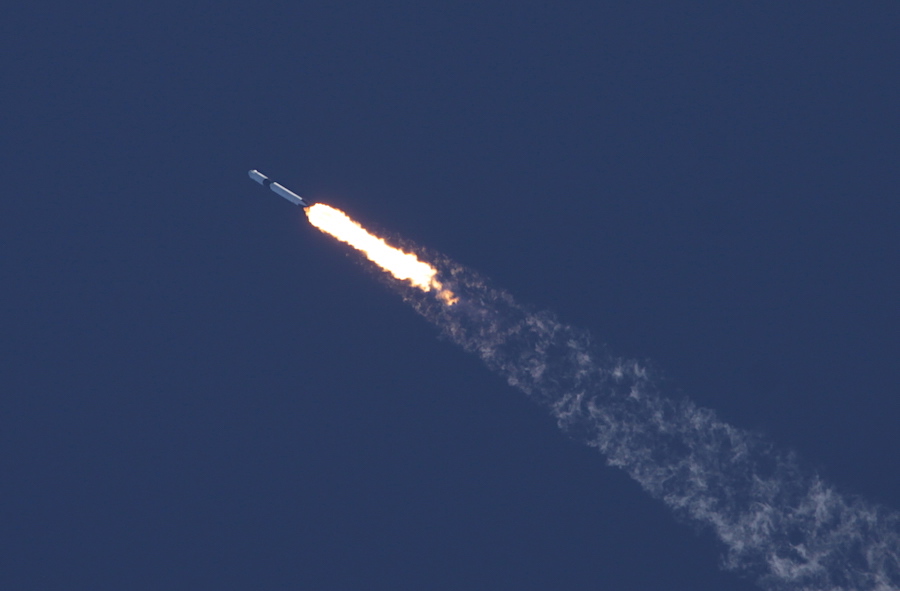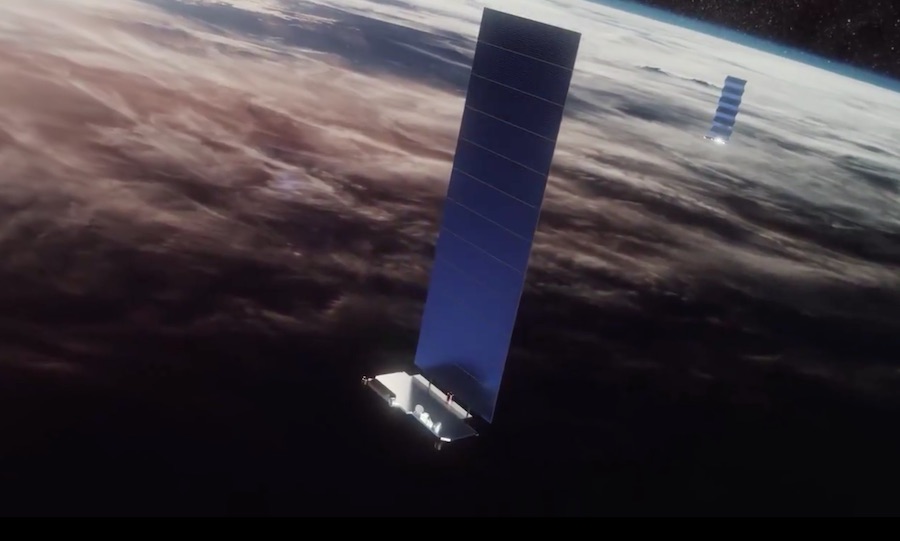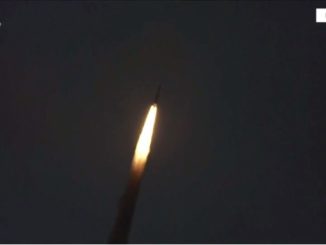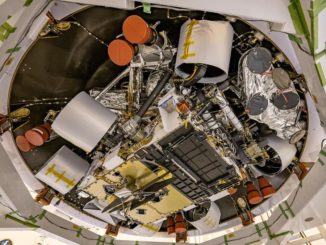
For the third time in three weeks, SpaceX is preparing to launch a batch of satellites for the company’s Starlink Internet network from Florida’s Space Coast. Liftoff of a Falcon 9 rocket is set for Thursday afternoon from pad 39A at NASA’s Kennedy Space Center in Florida, weather permitting.
Liftoff of SpaceX’s Falcon 9 rocket is scheduled for Thursday at 4:39 p.m. EDT (2039 GMT), and two commercial Earth-imaging microsatellites owned by BlackSky will accompany the Starlink payloads into orbit.
The launch Thursday will be SpaceX’s fourth Falcon 9 mission in less than four weeks, continuing a whirlwind cadence of launches that began May 30 with the liftoff of SpaceX’s Crew Dragon spacecraft carrying NASA astronauts Doug Hurley and Bob Behnken into orbit.
SpaceX launched another Falcon 9 rocket June 3 with 60 Starlink satellites, and most recently delivered another 58 Starlink payloads into orbit with a Falcon 9 rocket June 13 on a flight that also carried three commercial SkySat Earth-imaging satellites to space for Planet.
Thursday’s mission will be SpaceX’s 11th launch of 2020, and will be followed by another Falcon 9 launch scheduled June 30 from pad 40 at Cape Canaveral Air Force Station with the U.S. Space Force’s next GPS navigation satellite.
The launch June 30 is scheduled for a 15-minute window opening at 3:55 p.m. EDT (1955 GMT).
SpaceX plans to test-fire the rockets for its next two missions this week. The previously-flown Falcon 9 rocket assigned to the Starlink/BlackSky launch is scheduled for a hold-down test-firing of its nine Merlin main engines Wednesday at pad 39A.
A test-firing of the brand new Falcon 9 booster for the GPS launch is scheduled later this week on pad 40, perhaps as soon as Thursday.
Forecasters predict typical summertime weather on Florida’s Space Coast for Thursday afternoon. There’s a 60 percent chance weather conditions could violate the Falcon 9’s liftoff weather constraints at launch time Thursday, according to an outlook issued Tuesday by the Space Force’s 45th Weather Squadron.
The weather pattern over the next several days on the Space Coast “will favor afternoon showers and thunderstorms with daytime heating and the prevailing offshore flow,” forecasters wrote Tuesday. “The east coast sea breeze will remain closer to the coast, and the west coast sea breeze will move across the peninsula. Mid to upper level westerly steering flow will also help push showers and storms, along with their associated anvils, back towards the east coast.”
The main weather concerns for Thursday’s launch opportunity will be with the potential for violating the cumulus cloud, anvil cloud and lightning rules.
There’s some slight improvement in the forecast for a backup launch opportunity Friday afternoon, when there’s a 40 percent chance of weather violating launch criteria.

SpaceX’s Starlink network is designed to provide low-latency, high-speed Internet service around the world. SpaceX has launched 538 flat-panel Starlink spacecraft since beginning full-scale deployment of the orbital network in May 2019, making the company the owner of the world’s largest fleet of satellites.
SpaceX says it needs 24 launches to provide Starlink Internet coverage over nearly all of the populated world, and 12 launches could enable coverage of higher latitude regions, such as Canada and the northern United States.
The Falcon 9 can loft up to 60 Starlink satellites — each weighing about a quarter-ton — on a single Falcon 9 launch. But launches with secondary payloads, such as BlackSky’s new Earth-imaging satellites, can carry fewer Starlinks to allow the rideshare passengers room to fit on the rocket.
The initial phase of the Starlink network will number 1,584 satellites, according to SpaceX’s regulatory filings with the Federal Communications Commission. But SpaceX plans launch thousands more satellites, depending on market demand, and the company has regulatory approval from the FCC to operate up to 12,000 Starlink relay nodes in low Earth orbit.
Elon Musk, SpaceX’s founder and CEO, says the Starlink network could earn revenue to fund the company’s ambition for interplanetary space travel, and eventually establish a human settlement on Mars.
Email the author.
Follow Stephen Clark on Twitter: @StephenClark1.



